Key takeaways:
- Introducing children to cryptocurrency can enhance their financial literacy and help them understand value creation and exchange.
- Engaging discussions about money management can empower kids to think critically about their financial choices, such as saving, investing, and budgeting.
- Using relatable activities and safe earning methods, like community tasks and educational apps, can make learning about cryptocurrency fun and rewarding.
- Setting achievable goals and incorporating friendly competition can motivate children to actively participate in earning and managing their cryptocurrencies.

What is Crypto for Kids
Crypto for Kids is about introducing children to the concept of digital currency in a fun and engaging way. I remember the first time my child asked me how money works; it was a delightful moment. I realized then that explaining crypto could open doors to broader financial literacy, sparking curiosity in them about how value is created and exchanged in the digital world.
At its core, Crypto for Kids simplifies complex topics by using relatable examples. For instance, when I shared how my favorite video game features digital items that can be traded, my child’s eyes lit up. They began to understand that just like those items, cryptocurrencies like Bitcoin and Ethereum can hold value and be traded or sold.
I often incorporate stories into our learning sessions, illustrating how young entrepreneurs use cryptocurrency to fund projects. This approach not only keeps the lessons light-hearted but also inspires my child to think creatively about their own financial future. Engaging in discussions on crypto can lead to powerful questions: What would you do with your own digital currency? This type of dialogue can help children envision real-world applications of what they learn.

Importance of Financial Literacy
While teaching my child about money management, I’ve come to see financial literacy as a vital life skill. It’s not just about saving or spending; it’s about understanding the broader implications of financial decisions. For instance, I shared how our choice to save for a family trip can mean delaying instant gratification. It’s a valuable lesson that fosters patience and long-term thinking.
I vividly recall a moment when we were discussing budgeting for purchases, and my child exclaimed, “But what if we invest instead?” That question opened up a rich conversation about investments, risk, and reward. These discussions are not merely academic; they empower my child to think critically about money and the choices that shape their financial future.
Each time I guide my child through the principles of earning and saving, I see their confidence grow. It’s like planting seeds for their future; I want them to cultivate an informed attitude towards money. When kids understand the importance of financial health, they begin to see opportunities everywhere—what could be more exciting than that?
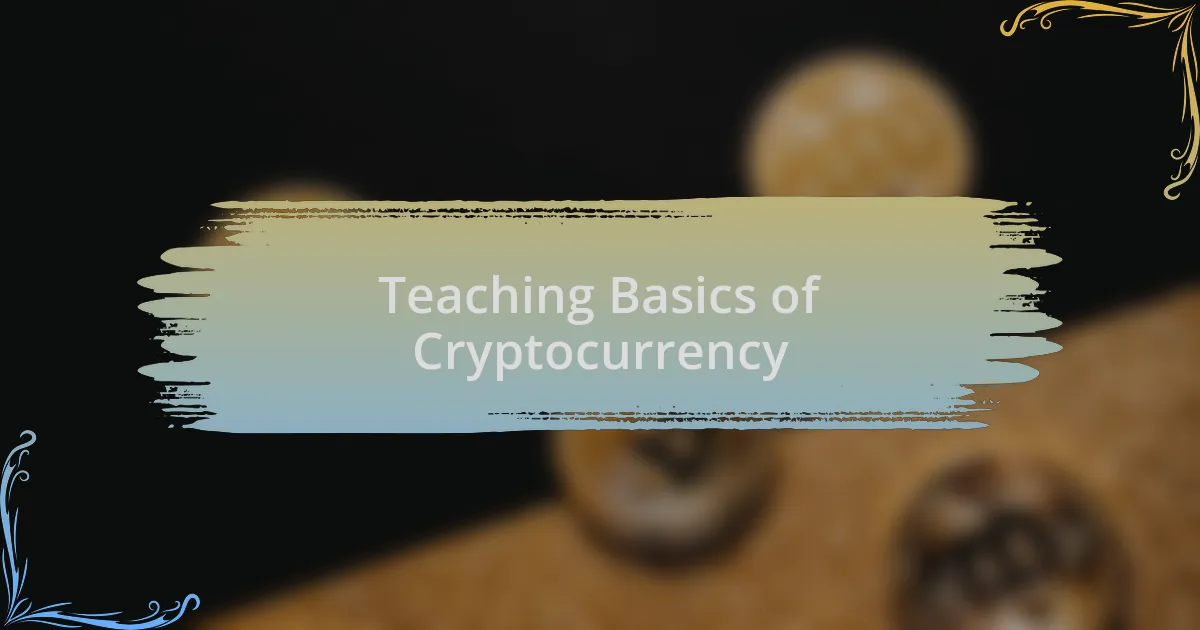
Teaching Basics of Cryptocurrency
When I first introduced my child to cryptocurrency, I started with the concept of digital money. I explained it like this: just as we use cash to buy things, we can use cryptocurrency to purchase items online. That simple comparison helped my child understand the basics without overwhelming them. I could see the curiosity in their eyes—Would we ever use Bitcoin to buy our favorite snacks?
Explaining blockchain technology was a bit more challenging, but I approached it like building blocks. Each block represents a record of transactions, linked securely to all the previous ones, creating a chain of trust. I used an analogy about how we store important family documents—once locked away in a box, they’re untouchable by anyone who doesn’t have the key. My child’s response was thoughtful: “So, it’s like a history we can’t change?” That moment sparked a deeper understanding—there’s accountability in every transaction, something that holds real value.
I believe that teaching my child about different cryptocurrencies also means discussing the emotional aspects of investing. For instance, I shared my own experiences with price fluctuations and how they made me feel anxious at times. This led to a conversation about understanding emotions in finance. I asked, “How do you think you would feel if your investment dropped suddenly?” That dialog opened their eyes to the reality of risk-taking and the importance of staying calm under pressure, valuable lessons that extend beyond just cryptocurrency.
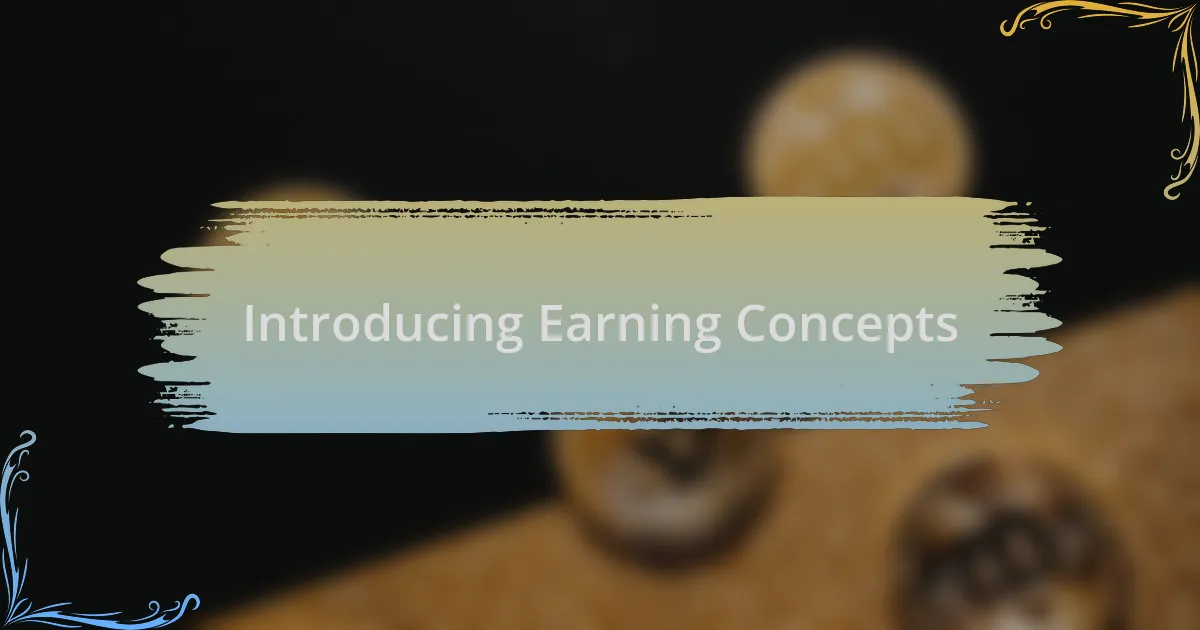
Introducing Earning Concepts
When introducing earning concepts to my child, I started by connecting the idea of work with rewards. I asked, “What do you think you would have to do to earn money?” This simple question opened a pathway for us to discuss chores around the house. By linking earning to everyday tasks, I noticed that it clicked with them—a sense of responsibility mixed with the excitement of earning a small allowance.
We also talked about the importance of saving. I shared how, when I was younger, I saved up for my first bicycle. I explained how every chore I completed allowed me to put a little money aside. Watching the funds grow made me feel empowered and patient. I could see my child’s eyes light up at the idea of working towards something they truly wanted, and it reinforced the lesson that earning and saving go hand in hand.
To deepen their understanding, I introduced the concept of investing. I shared my experience with buying small fractions of cryptocurrency, likening it to planting seeds in a garden. I asked, “What happens when you water the seeds and take care of them?” This allowed us to explore how nurturing an investment can lead to growth over time. It’s fascinating to see how these discussions not only spark interest but also lay the groundwork for financial literacy.
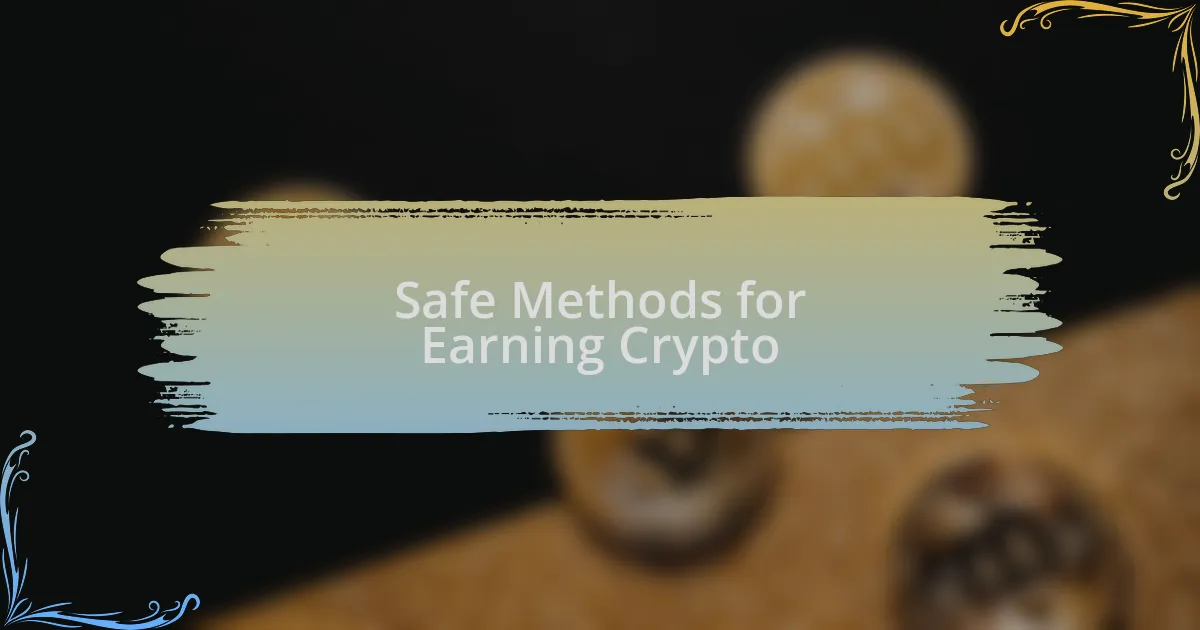
Safe Methods for Earning Crypto
When it comes to earning cryptocurrency, I’ve seen firsthand how safe methods can offer both excitement and education. One fantastic way I found is through educational platforms that allow kids to earn crypto by completing quizzes or learning modules. I remember my child lighting up after finishing a challenging lesson and receiving a small reward in cryptocurrency. It made learning feel like an adventure, blending knowledge with tangible rewards.
I also emphasize the importance of using reputable platforms. Just like teaching my child to be cautious with personal information online, I make it clear that they should only engage with well-known crypto exchanges or apps designed for youth. I recall explaining the thrill of earning crypto through participation in safe blockchain-based games, noting how some games reward players with small amounts of crypto for their achievements. This way, they grasp the principles of earning without exposing themselves to unnecessary risks.
Another method I’ve implemented is teaching them about microtasks. Websites that allow users to complete simple tasks in exchange for cryptocurrency can be incredibly engaging. I remember one evening sitting together, browsing these sites, and tackling small jobs. It was exciting for my child to see real rewards for their efforts, reinforcing the concept that even small actions can lead to bigger rewards. It’s a practical approach to help them understand the value of time and effort in earning money—be it in fiat or crypto.
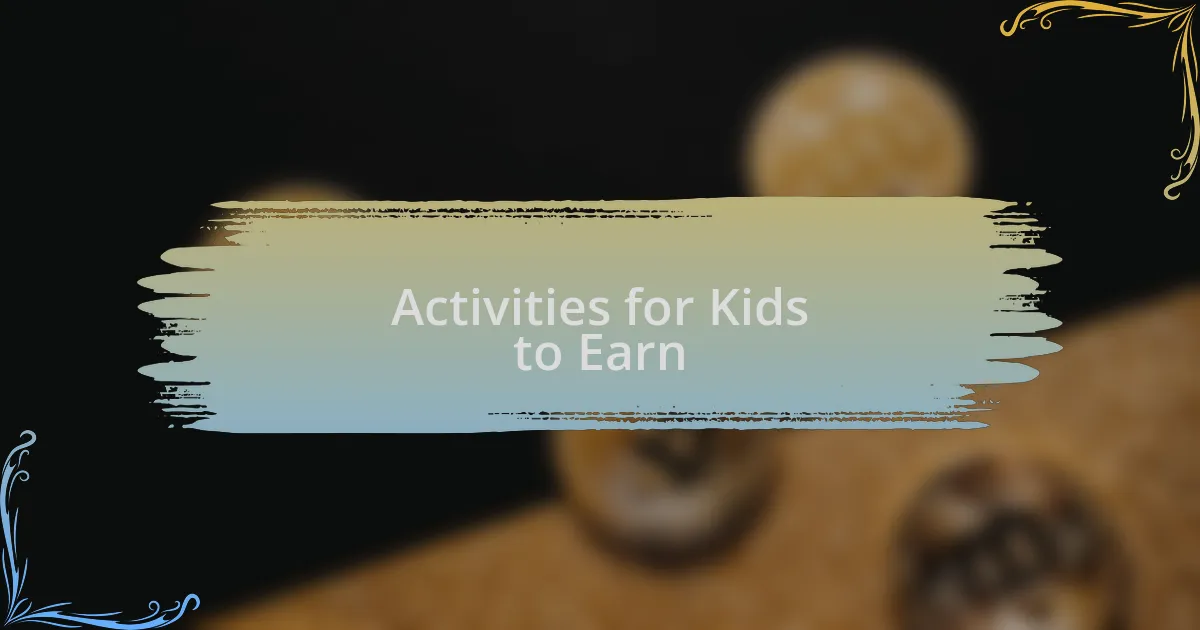
Activities for Kids to Earn
One engaging activity that I’ve found effective is having my child participate in local community chores, like dog walking or lawn mowing, in exchange for cryptocurrency. It’s amazing to see how doing something as simple as helping a neighbor can lead to earning tangible rewards. I often ask my child, “How does it feel to earn your own money for a job well done?” Watching their face light up with pride when they complete a task is a rewarding experience for both of us.
Another fun option is organizing a small family bake sale where my kids can sell treats they’ve made, and we accept payment in crypto. This not only sparks their entrepreneurial spirit, but it also helps them learn about pricing and demand while understanding the crypto value exchange. I still cherish the moment my child exclaimed, “I can’t believe I earned crypto by just baking!” The excitement truly resonates, reminding them that creativity and effort can lead to earning opportunities.
Lastly, I found that engaging with educational apps that reward kids with tokens for lessons learned can really drive the message home. I remember sitting beside my child, cheering them on as they completed challenges and watched their crypto balance grow. This makes it clear that learning and earning can walk hand in hand. Isn’t it fulfilling to witness your child connect their efforts with real-world rewards? It’s an eye-opening experience that brings earning to life.
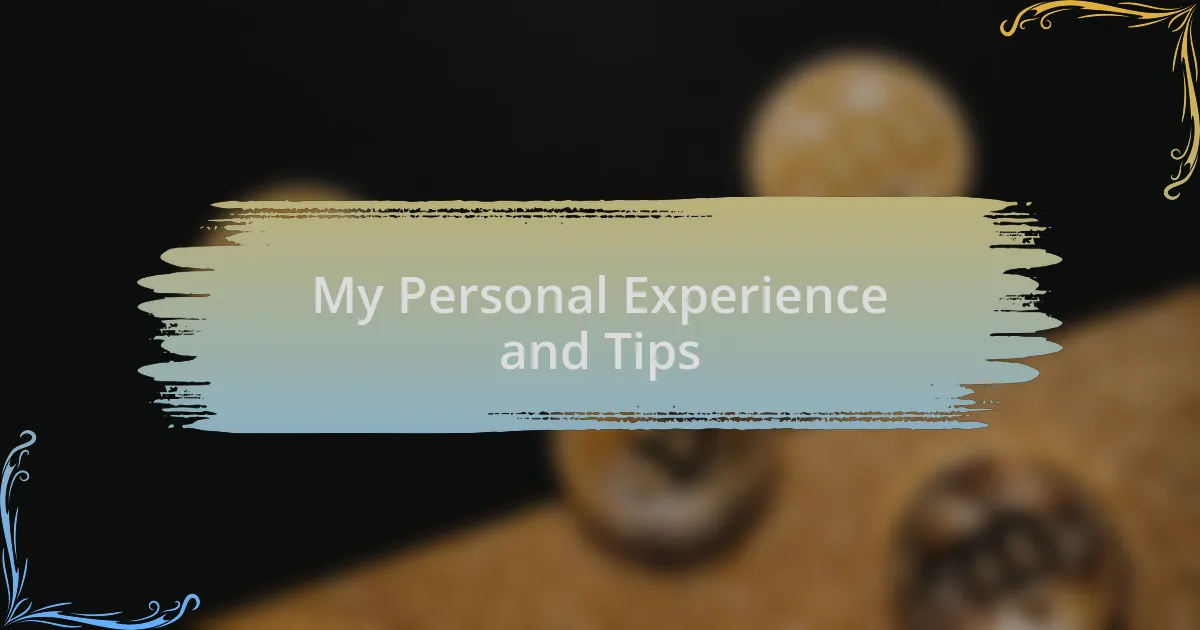
My Personal Experience and Tips
When I first introduced my child to the concept of earning with cryptocurrency, we created a chart together to track different activities they could do for rewards. I clearly remember the moment my child, brimming with excitement, pointed at a new entry for “car washing” and declared, “I want to do this one next!” It was this hands-on involvement that genuinely sparked their interest. Have you ever seen how a small visual representation can motivate a child? I truly believe it makes them feel more in control of their earnings.
One practical tip that worked wonders for us was setting small, achievable goals tied to their earning potential. I encouraged my child to save a portion of any crypto they earned, explaining the concept of “putting it aside for something special.” I witnessed their eyes widen when they realized that saving could lead to bigger rewards, like buying a coveted game. This teaching moment fostered a sense of responsibility and long-term thinking, which I found invaluable. Who knew that managing a digital wallet could cultivate such life skills?
Another memorable experience involved a friendly competition with family where we tracked who could earn the most crypto through various tasks over a month. I can still hear my child giggling about how they planned to outdo their cousin by making personalized greeting cards to sell online. It was less about the outcome and more about the teamwork and strategy that evolved during the process. Have you ever noticed how competition can ignite a child’s enthusiasm? This playful approach made learning about earning fun and engaging, reinforcing the idea that work can be rewarding in more ways than one.